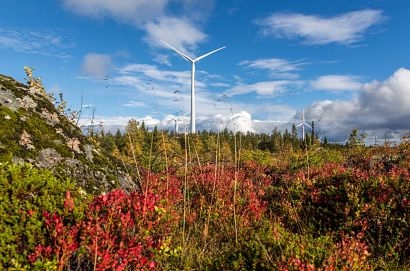
The new sustainability strategy includes a commitment to make turbines fully recyclable by 2040, with blades fully recyclable by 2030. Most of the components of a wind turbine can already be recycled today, but wind turbine blades, specifically, do represent a challenge due to the materials used and their complex composition.
The company will actively promote the creation of a circular economy by identifying opportunities for large-scale product recycling, making turbine materials more sustainable and improving both waste and resource efficiency. To this end, the company has announced an ambitious goal to redesign all its turbines to ensure a 100 percent recyclable turbine marketed by 2040 and fully recyclable blades by 2030. This step marks a milestone towards a fully recyclable wind turbine value chain.
The strategy also includes replacement of all new and existing heating and cooling systems with zero carbon alternatives, and self-generation in the wind farms and factories.
“At the heart of everything we do is a deep desire to improve our world through the provision of clean energy that will help to decarbonise the energy supply and tackle the threat of climate change” said Andreas Nauen, CEO of Siemens Gamesa. “That purpose doesn´t just end with the provision of wind energy, however, and we are determined to take action across all our activities that will have a positive effect on the environment, our company, and society. Pushing the boundaries of sustainability is an important pledge to lead change now but also for the generations to come”.
The new targets reinforce Siemens Gamesa’s sustainability by adding to several major decarbonisation successes over the last months. Specifically, Siemens Gamesa achieved carbon neutrality and verified its climate targets by the Science Based Target initiative (SBTi), becoming the first renewable energy manufacturer to do so. Additionally, the company has switched to being powered 100 percent by electricity from renewable sources.
For additional information:

